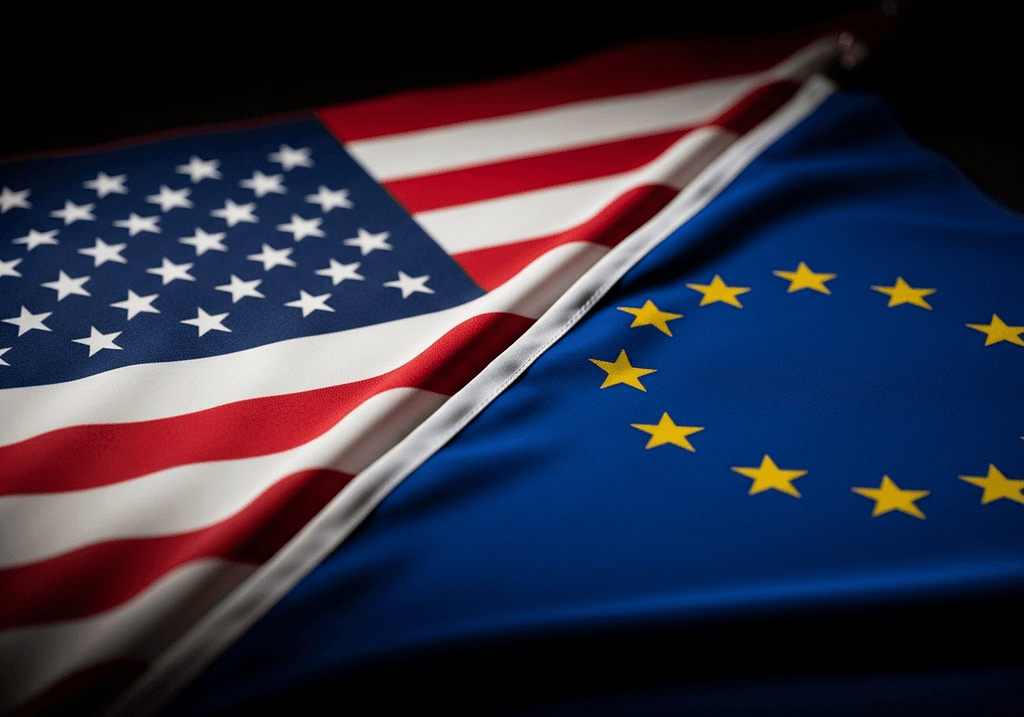Donald Trump announced groundbreaking trade measures that will shake the foundations of the global economy – implementing 30% tariffs on imports from the European Union and Mexico starting August 1st. These decisions will split the world’s strongest trade partnership worth 1.68 trillion euros annually and transform transatlantic relations forever. While Deutsche Bank evaluates these moves as negotiating tactics, analysts warn of immediate impact on global markets and supply chains across continents.
How 30% Tariffs Will Transform EU-US Trade Forever
The United States and European Union maintain the world’s largest bilateral trade relationship, representing nearly 30% of global trade in goods and services. Trade value between the EU and US reached 1.68 trillion euros last year, equivalent to approximately 4.6 billion euros in daily commerce.
Trump simultaneously negotiated an agreement with Vietnam reducing tariffs from the original 46% to 20%, while Brazil faces record 50% duties. If the EU or Mexico respond with their own tariffs, “whatever number you choose to raise them by will be added to the 30% we charge.”
Most Affected Industries: Automotive and Pharmaceutical Giants
Analysis shows the sectors most exposed to American tariffs include:
- Pharmaceutical industry
- Automotive sector
- Aviation industry
- German engineering
- French food products
- Italian luxury goods
Among EU member states, Germany, Italy, and Ireland will face the hardest impacts. The European Commission has already prepared countermeasures worth 21 billion euros on American goods, with a second package worth 72 billion euros awaiting approval.
What Trump’s Tariffs Mean for Investors and Treasury Yields
US Treasury bonds showed minimal volatility following Trump’s announcement of new tariffs. Ten-year Treasury yields held steady at 4.423%, while thirty-year yields rose by just one basis point to 4.971%. Key inflation data on Tuesday will provide clearer insight into tariff impacts on the American economy and Fed monetary policy.
China Benefits from Trade War: Record Exports Replace European Losses
While Trump escalates pressure on traditional allies, China capitalizes on the situation. Chinese exports grew 5.8% in June to a record 325 billion dollars, with the country successfully compensating for decreased US exports (minus 16.1%) through increased exports to ASEAN countries by 17%.
Chinese factories have successfully adapted to the “tariff roller coaster” and diversified export markets toward Southeast Asia. The question remains how long this resilience will last as the Trump administration prepares new measures against Chinese goods transshipment to America through third countries.
Brussels vs. Washington: Who Will Win the Tariff War?
European Trade Commissioner Maroš Šefčovič signaled that negotiations with American counterparts are approaching “a good outcome for both sides,” but the new tariff threat has created “new dynamics.” The EU prioritizes negotiations while simultaneously preparing countermeasures in case talks fail.
UBS analysts believe the EU and US will reach an agreement before August 1st, or the White House will extend the deadline again during ongoing negotiations. However, “aggressive” American demands, including complete market access without tariffs, complicate predicting Brussels’ response.
Why Trump Is Rewriting Global Trade Rules: Strategic Consequences
The new tariff policy represents a systemic shift in global commerce. Trump simultaneously negotiated a Vietnam agreement on 20% tariffs (reduced from originally threatened 46%) and is preparing a framework deal with India that could lower tariffs below 20%.
European ministers agreed to prioritize negotiations with the US while preparing massive countermeasures worth 72 billion euros. Tensions escalate domestically as well – National Economic Council Director Kevin Hassett suggested possible dismissal of Fed Chair Jerome Powell “if there’s cause.”




